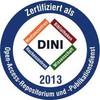Preview |
PDF, English
- main document
Download (23MB) | Terms of use |
Abstract
Despite the advantages and progress made over the years in the use of radioactive sources for the treatment of prostate cancer, there has been a decline in hospitals able to offer the multidisciplinary treatment modality to prostate cancer patients. The decline is associated not only with challenges faced during the intraoperative procedure but also with the preoperative and postoperative workflows. These challenges include but are not limited to, the complex nature of the multidisciplinary team and workflow, the steep learning curve involved, low reimbursement compared to other modalities such as external beam radiation therapy, and patient selection criteria, especially with regard to prostate size and pubic arch interference.
This study investigated the challenges associated with the multidisciplinary treatment modality of low-dose-rate prostate brachytherapy (LDR-PB). It proposes strategies to address these challenges, optimise the procedure, and investigate their impact on patient outcomes. The results of short-term patient follow-up for biochemical recurrence-free survival demonstrated the importance of a well-coordinated multidisciplinary brachytherapy team. Such a coordinated team approach optimises the workflow and leads to improved patient outcomes. The study also evaluated the approach to shortening the learning curve of hospital brachytherapists during the start-up phase of LDR-PB by incorporating the post-intraoperative planning task into the procedural workflow. Each treated intraoperative plan was retrospectively replanned after the procedure, which was performed outside the operating room. Applying the learning curve model, the study analysed the dosimetric parameters for each plan, the time taken to generate the intraoperative treatment plan in the operating room, and the overall treatment duration. The findings revealed how this approach shortened the learning curve.
Furthermore, LDR-PB components that influence the workflow and dosimetry of the prostate target volume were investigated. The designed in-house rigid template, with the possibility of oblique needle insertion (±30°), was constructed and tested using a Variseed™ treatment-planning system on a phantom. Our results showed that the placement of the inner needles/seeds with the proposed template improved the dosimetry of the retrospective plans. It also enhanced the dosimetry for prostate volumes > 50 ml with a minimal dose to the organs at risk. Consequently, this reduces the risk of radiation toxicity in the genitourinary system.
Finally, a feasibility study on modifying the Quicklink™ loader system was proposed to improve the procedure workflow by integrating a linear charge-coupled device camera into the loader system for seed logistics, seed pattern verification, and seed strength verification during the intraoperative real-time procedure.
| Document type: | Dissertation |
|---|---|
| Supervisor: | Hesser, Prof. Dr. Jürgen W. |
| Place of Publication: | Heidelberg |
| Date of thesis defense: | 8 September 2025 |
| Date Deposited: | 14 Oct 2025 12:10 |
| Date: | 2025 |
| Faculties / Institutes: | Medizinische Fakultät Mannheim > Mannheim Institute for Intelligent Systems in Medicine (MIISM) |
| DDC-classification: | 530 Physics |
| Controlled Keywords: | Brachytherapy, Low dose rate, Prostate cancer |









